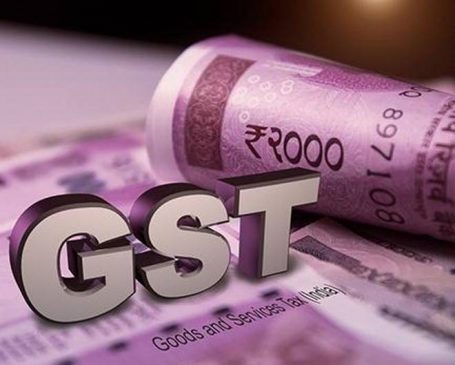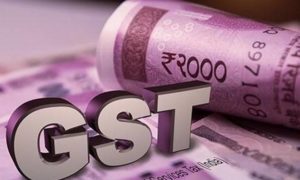Many GST updates came during the last financial year, and businesses also realigned their processes to comply with the dynamic tax laws
The financial year 2022-23 might be over but the impact of the previous year’s goods and services tax (GST) updates still continues. Many GST updates were made during the last financial year, and businesses also realigned their processes to comply with the dynamic tax laws.
In this new financial year, let’s rewind on the GST updates of FY 2022-23 and understand how they impacted businesses.
Read More: Banks wants india to restore merchant discounts on RuPay cards
Extension of E-Invoicing To More Businesses
The department extended e-invoicing to businesses having turnover between Rs 10 crore to Rs 20 crore with effect from October 1, 2022. Eligible businesses must change their processes, including modifications to the invoicing/ billing software and GSTR-1 preparation. Even though GSTR-1 filing becomes easier with auto-population, complications arise in reconciliations.
However, this move has helped easy access to formal credit channels, such as invoice discounting for such businesses as the invoices run through an authentication system. On the flip side, enterprises sourcing from small businesses must ensure that their vendors comply with the mandate so that they don’t lose tax credits or face delays in claims. Once streamlined, they enjoy genuine Input Tax Credit (ITC) claims.
Read More: RBI slaps Rs 84.5-lakh fine on Central Bank
Changes in GST Returns
- The government has extended the last date to claim ITC to 30th November of the next financial year from the due dates of September GST returns. This move has given more time for businesses to claim missing ITC and declare unreported liability, if any.
- The department added a new table: 3.1.1 in GSTR-3B, where e-commerce operators and e-commerce sellers or e-tailers must separately report the online sales in their GSTR-3B. This move majorly impacted e-commerce sellers as they must maintain separate sales books for online sales.
- Also, it mandated businesses to report non-reclaimable reversals of ITC in Table 4(B)(1) and reclaimable ITC reversals in Table 4(B)(2) of GSTR-3B. Businesses must maintain a separate ledger for ineligible ITC for better tracking. Also, they have to deeply reconcile GSTR-2B with Purchase Register (PR), including ineligible ITC and track the movement of every invoice/ credit debit note (CDN) month-on-month.
- The government mandated businesses to report all interstate B2C sales made to unregistered persons and sales to composition taxpayers/UIN holders based on the place of supply in Table 3.2 of GSTR-3B. Accordingly, businesses must improve vendor onboarding and KYC to verify GSTINs proactively and to make accurate reporting.
- The authorities implemented sequential return filing for GSTR-1 to ensure that GSTR-1 related to the previous month/quarter is filed before filing the current period GSTR-1. Also, it interlinked GSTR-3B filing with GSTR-1, where a business shall not be allowed to file GSTR-3B unless they filed GSTR-1 for that particular tax period. This move nudged non-compliant businesses to file pending tax returns and enhanced the ITC claim process of genuine taxpayers.
- Also, the department implemented phase-wise HSN code reporting to mandate that businesses with more than Rs 5 crore turnover shall mandatorily report a 6-digit HSN code. Whereas the businesses with less than Rs 5 crore turnover shall report a 4-digit HSN code. Accordingly, businesses have to include HSN codes at the invoice level to make accurate reporting in GSTR-1.
- The GSTN made a deep classification in GSTR-2B to bifurcate the ‘ITC Available’ and ‘ITC Not Available’ based on a few conditions. This move helped the recipients easily identify the ineligible ITC before filing GSTR-3B and avoid future notices.
- The annual return exemption for businesses with turnover up to Rs 2 crore has continued for FY 2021-22. This update eased compliance for small businesses.
Read More: PhonePe is now the first payment app to link 2 lakh RuPay credit cards to UPI
Other Updates
- The government has allowed the transfer of GST between GSTINs under the same PAN. Accordingly, businesses can transfer the CGST available in the electronic cash ledger to another GSTIN’s electronic cash ledger as CGST or IGST.
- The government also made a retrospective amendment to charge interest @24% per annum on any excess ITC either wrongly claimed in returns or utilised.
- The department announced amnesty schemes for GSTR-4, GSTR-9, and GSTR-10 so that non-compliant businesses can get relief while filing pending returns of past years. Also, it has rationalised the late fee for GSTR-9 to reduce the compliance burden on businesses.
- The department has also extended a few GST return due dates on several occasions to ease compliance.
The department is still amending the GST law even after five years of the GST regime. Hence, it is becoming imperative for businesses to adopt the latest technologies to comply with the dynamic tax laws and avoid adverse consequences.





































